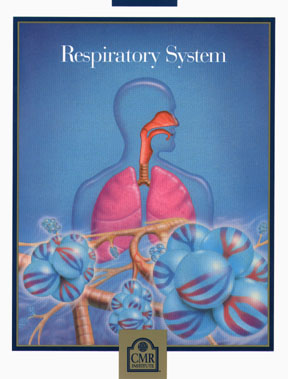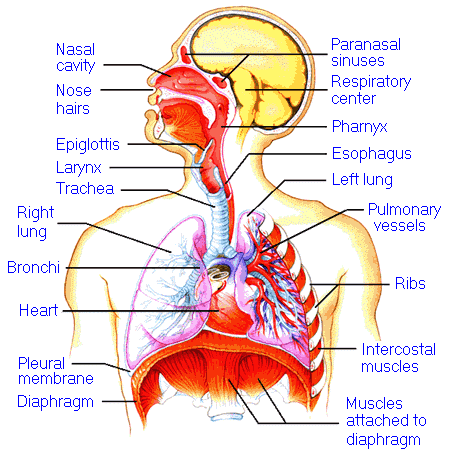 Respiratory
System
Respiratory
System













It
is the main thing to help you live. Oxygen dioxide is the primary gas that
the blood gets rid of. The upper structures of the respiratory system are
combined with the sensory organs of smell and taste and the digestive system.
When you inhale (breathing in) your skeletal muscle and the diaphragm contract,
which then enlarge the chest cavity and cause the lungs to draw in air.
This creates a partial vacuum in the thoracic cavity, air passes through
the nose, pharynx, larynx, trachea, and then into the two bronchi to the
lungs. Oxygen and carbon dioxide pass between the blood and the air in
the alveoli, which are at the end of the smallest bronchi. Oxygen diffuses
from the inhaled air through the alveoli walls into the capillaries. The
lungs contain more than 300 million alveoli. When you exhale or breathe
out, your skeletal muscles and diaphragm return to the relax position which
decrease the size of the chest cavity and therefore pushes the air out
of the lungs. The rib cage serves as a structural support for the whole
thoracic arrangement, and peural membranes help provide lubrication for
the respiratory organs so that they are not chaffed during respiration.
The air we exhale contains 100 times more carbon dioxide than inhaled air.
In a resting position a healthy individual will inhale and exhale approximately
16 time per minute. !













 FUNCTIONS
FUNCTIONS
To provide
intake and output of air, and for he exchange of gases in blood and in
the air.
 ORGANS
ORGANS
Organs in
this system include Nasal Cavity, Pharynx, larynx, trachea, bronchi, and
lungs.
 Diseases
Diseases
 Asthma
Asthma
 Pneumonia
Pneumonia
 Emphysema
Emphysema
 Sinus Infection
Sinus Infection




 TOP
TOP
 Respiratory
System
Respiratory
System
![]()
![]()
![]()
![]()
![]()
![]()
![]()
![]()
![]()
![]()
![]()
![]()

![]()
![]()
![]()
![]()
![]()
![]()
 FUNCTIONS
FUNCTIONS ORGANS
ORGANS Diseases
Diseases![]()